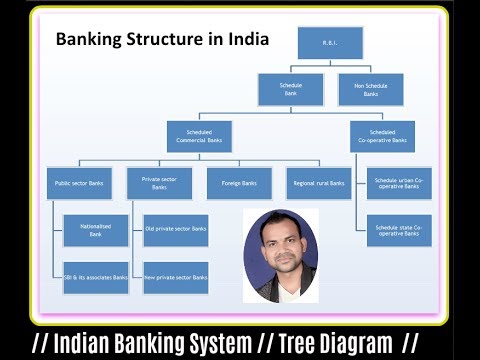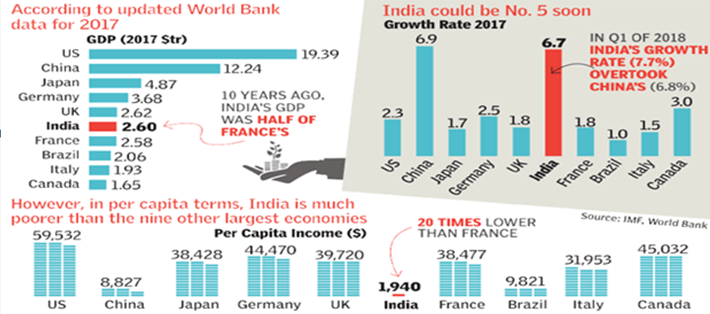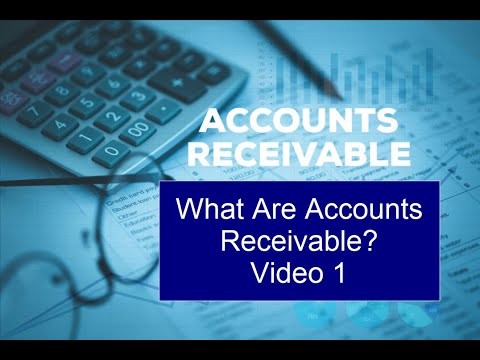Contents:


Receive information of your transactions directly from Exchange on your mobile/email at the end of the day. The Debt to Equity or D/E ratio is used as a measure to compare a company’s capital structure. Using more Debt than equity is considered as an aggressive capital structure. Capital Structure or Capitalization is defined as the combination of Debt and Equity for a businesses’ financing and operational needs as well as to fund its long term growth.
One is contributed capital, or the money invested in the business by the purchase of shares of stock. Capital structure refers to the kinds of securities and the proportionate amounts that make up capitalization. It is the mix of different sources of long-term sources such as equity shares, preference shares, debentures, long-term loans and retained earnings. A company’s capital structure refers to the sources of financing the firm uses to fund its operations.
Company360 plans
The composition of various long-term sources of finance such as equity capital, preference capital and debt capital make up the capital structure of a business. The analysis of a company’s capital structure should also include a comparison of the long term and short term debts. So, references to capital structure state the D/E or the debt-to-equity ratio. If there is a larger proportion of debt versus equity, the company has a more aggressive capital structure.

An excessively high debt to equity ratio could mean a company is not using its growth potential and is paying too much for capital. Companies need capital to finance operations, organic growth, acquisitions and returning cash to shareholders. A company’s capital structure will ultimately determine its performance. A capital structure that is too reliant on the debt will leave less cash available for management compensation and free cash. The most beneficial type for a company depends on its payback priority.
Accountancy and Financial Management
According to the definition of R.H.Wessel,“The long term sources of fund employed in a business enterprise”. According to the definition of Presana Chandra,“The composition of a firm’s financing consists of equity, preference, and debt”. There are no hardcore rules when trying to find the ideal mixture of long-term funds for the company. This is because the factors determining Capital Structure will be different for each type of organization.
Heavily financed companies are often riskier than companies that use a smaller ratio. However, such high ratios can indicate a company’s growth potential. By calculating the debt/equity ratio, analysts can determine a company’s capital structure and assess how it will affect its profitability. Capital structure refers to the ratio of debt and equity in the total capital of a company. Equity shareholders tend to have more rights over a company in comparison to debenture and preference shareholders. The capital structure of the firm will be determined by the kind of shareholders and the limitations in their voting rights.
Our experts suggest the best funds and you can get high returns by investing directly or through SIP. Download ClearTax App to file returns from your mobile phone. It is the ratio between EBIT or earnings before interest and tax and the interest itself. The company can have more borrowed money if this ratio is high. An appropriate capital structure helps in maximizing the capital of the shareholders while minimizing the overall cost of the capital. A good capital structure ensures that the funds available are utilized effectively.
Upwork Inc (UPWK) Q1 2023 Earnings Call Transcript – AlphaStreet
Upwork Inc (UPWK) Q1 2023 Earnings Call Transcript.
Posted: Wed, 03 May 2023 14:28:00 GMT [source]
The method to calculate the specific cost for each of these sources is different because the break-even point of these sources will be different. For example, when the Cost of Debt is being calculated, then the tax rate of the company can be deducted from the interest rate of the debt. Hope everything related to the capital structure is clear now, and if not, please drop comments below.
The DCS data also includes short-term credit facilities, swaps and more coverage. The data allows users to review debt instruments by their ultimate issuer and immediate parent company, enabling them to spot the patterns and trends in the structure over time. Make sure to read this article to learn how to make the most efficient capital structure for your company. You’ll want to start by identifying the main differences between these types of capital. Using a mix of all will maximise your chances of success. Update your mobile numbers/email IDs with your stock brokers.
Additionally, in times of low-interest rates, debt is abundant and easy to access. We generally study the left-hand side of the balance sheet for the financial structure of a company. The capital structure is a combination of both debt and equity. When the capital structure of a company is optimal, it balances the equity and debt so that the return for shareholders is maximized. Is that it is a combination of long-term fund sources.
Generally, a higher payback priority means lower risk, making it more attractive to invest in new projects. A company’s capital structure reflects how it funds its operations. There are different types of debt, such as long-term debt, specific short-term liabilities and preferred stock. If we raise additional funds through issue of equity shares then control over company of existing shareholders will be diluted. Existing management control and ownership remains undisturbed with debt finance. When giving money to businesses, lenders evaluate the firm’s financial leverage.
A company could use any one or more of these options. But only the long-term funding sources are considered for the Capital Structure definition. The amount of money raised from a source will determine the proportion of that funding source in the overall Capitalization Structure of the company. So, the Leverage ratios of a company can be used to get a good insight about the Capital Structure of the firm.
Accountancy and Financial Management | Accountancy and Financial Management – B Com
The DCS data is derived from financial tables of actual company filings and accounts for the full range of debt instruments, including cash and equity. Refers to the mix of debt and equity used to finance a business. A high leverage ratio and an aggressive capital structure result in higher growth rates as well, whereas a traditional capital structure will lead to lower growth rates. The company must issue debts as it does not cost dilution of control.
In other words, it represents the mix of long-term funds such as equity shares, preference shares, long-term loans, retained earnings etc., in the total capitalisation of a firm. Capital Structure is a specific combination of debt and equity of a company required to fund its overall growth and operations. The debt comes in the form of loans or bond issues and the investment comes in the form of earnings retained preferred stock or common stock.
With the increase in debt proportion, financial risk and expectations of shareholders increase. While the Debt Equity Ratio is the most generally utilised leverage ratio, the three ratios listed above are also commonly employed in corporate finance to assess a company’s leverage. Alternatively, the corporation might choose the latter option and fund the asset using a 50/50 per cent mix of common stock and debt. If the asset increases by 40%, the item will be worth $140,000. Creates employment opportunities– Every business needs human resources for its successful operations, and every business requires a certain amount of capital.
- An increase in financial leverage will lead to decline in the weighted average cost of capital , while the value of the firm as well as market price of ordinary share will increase.
- When presented with a company’s financial statements, one should know how to interpret the numbers.
- Leverage suggests using borrowed capital/funds to intensify the returns from a project/investment.
- It is considered to be the cheaper form of financing capital as the interest payments on debts are tax-deductible expenses.
- If we raise additional funds through issue of equity shares then control over company of existing shareholders will be diluted.
If you want to manage your capital structure better, it’s essential to keep track of profit and loss ratios. Therefore, signing up for a platform like Khatabook can be ideal. However, it’s important to remember that there is no magic formula for optimal capital structure. It can vary depending on the industry, stage of development and external changes in interest rates and regulatory environment. When considering the best capital structure, you need to consider the company’s life cycle, its free cash flow profile and the market conditions. The capital structure of a company is critical to its success.
The equity component of capital structure includes the ownership shares, common stock, preferred stock, future cash flows, retained earnings and profits. Is that capital is a mixture of both, which a business uses to finance its day-to-day operations, growth, and assets. Owner’s funds or Equity includes Preference share capital, equity share capital, retained earnings, reserves, and surpluses. While debt or borrowed funds include public deposits, loans, and debentures. The capital structure is the specific combination of a company’s debt and equity to fund its overall growth and operations. Debt comes in the form of bond issues or loans, and investment can come in the form of common stock, preferred stock, or earnings that are retained.
Mutual fund Investments
Capital structure arbitrage refers to a strategy used by companies and individual where they take advantage of the existing market mispricing across all securities to make profits. In this strategy, there is buying share of undervalued firms and sell shares of overvalued firm. The main objective is to make use of the pricing inefficiency to make a profit.
definition of capital structure may be raised with the help of various sources. If the company maintains proper and adequate level of capital, it will earn high profit and they can provide more dividends to its shareholders. Determining securities is influenced by stock market conditions. Investors are ready to invest in equity shares and take a risk during the boom. But during times of depression, it’s exactly the opposite.
- There are multiple ways to raise capital in the short-term and the long-term.
- Is that capital is a mixture of both, which a business uses to finance its day-to-day operations, growth, and assets.
- If the interest rates are reasonable, it is also quicker and easier to access.
- This study mainly depends on the secondary data available on the internet.
- The capital structure is also affected by the policies of the government.
There are several measures analysts and investors use to evaluate the capital structure. A debt-to-equity ratio is one of them, and the ratio tells investors how much debt the company has compared to its total equity. The optimal capital structure combines debt and equity, and the optimal balance between these sources is called capital equilibrium. Different companies have different capital structures, so it is crucial to understand how they work and what works best for each. Include industry leverage, growth opportunities, asset tangibility, expected inflation, profitability, firm size and stock market return. When comparing the capital structures of different companies, it’s important to understand the differences between these capital types.
A company can raise capital through different channels for its short term as well as long term business needs. The company tries to optimize resources through both equity and debt for creating a balanced mix of capital funding. It can simply be defined as the relationship between various sources of long-term finance. A major function of a financial manager is to determine the optimal capital structure for a company i.e. optimum mix of debt and equity.
MGM RESORTS INTERNATIONAL REPORTS FIRST QUARTER … – PR Newswire
MGM RESORTS INTERNATIONAL REPORTS FIRST QUARTER ….
Posted: Mon, 01 May 2023 20:15:00 GMT [source]
Capital structure can be a combination of the long-term debt, short-term debt, common stock, and preferred stock of a company. In assessing the capital structure, the proportion of a firm’s short-term debt against long-term debt is considered. The weighted average cost of capital is another important measure to consider. In this measure, the cost of debt to equity is multiplied by the proportion of each capital component.
Why The Labor Movement Needs to Be More Confrontational and … – Current Affairs
Why The Labor Movement Needs to Be More Confrontational and ….
Posted: Sat, 29 Apr 2023 20:04:40 GMT [source]
The cost of capital, corporation finance and the theory of investment. The company’s capital structure is therefore such that for every 50 cents of debt, the company makes $1 of equity. If you sell a product people need, the debt will be a lower risk than if you rely on a cyclical or boom business and dependent on the boom to continue to fund your operations. The following points indicate the difference between the financial structure and capital structure.
The goal of management is to find the optimal mix of equity and debt, also known as the optimal financial structure to finance operations. Read on to learn more about this important aspect of corporate finance. Capital gains are profits earned on selling fixed and financial assets such as machinery, equity shares etc. These are non-recurring and do not occur due to the regular course of business. Capital gains also depend on the nature of the business.
